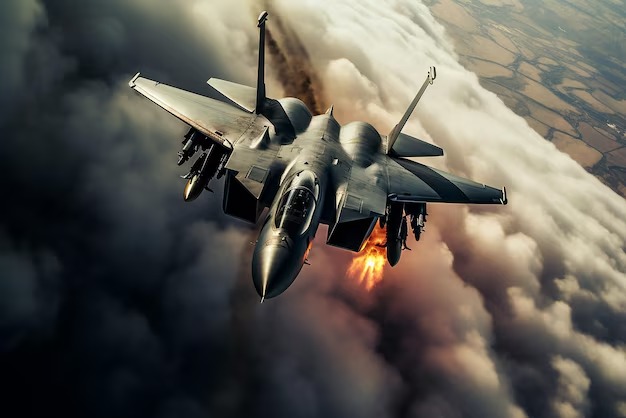1. NCL Buildtech Unlisted Share
A) Business Model:
- Coatings (Paints)
- Walls (AAC Blocks)
- Window/Doors
B) Segment Wise Break-up FY 2023 (In Crores)
|
Particulars
|
Coatings
(22.55%)
|
Walls
(27.76%)
|
Windoors(
49.69%)
|
Total
|
|
Segment Revenue(India)
|
101.55
|
125.01
|
223.78
|
450.34
|
Raw Materials: The prices of raw materials account for 50-60% of total sales.
C) Industry Analysis:
Paint Industry:
(i) Industry Structure: India Paints and Coatings Market in 2024 is USD 9.60 Billion and expected USD 15.04 Billion in 2029 with a CAGR of 9.38%. Market concentration is high and major players in the market are Asian Paints, Berger, Kansai Nerolac, Nippon paint and Akzonobel. Grasim Industries is also entering the paints sector with investment of INR 10,000 crores. Asian Paints has also planned investments of ₹ 8,750 Crores over the next 3 years.
(ii) Operating Margins: The anticipated growth in FY24 is accompanied by expected improvements in operating margins. These improvements, ranging from 100 to 200 basis points, are attributed to the decline in prices of critical raw materials and the price increase undertaken by key industry players during FY23 and Q1FY24.
(iii) Competitive Intensity: Long-term competitive intensity in the industry is expected to escalate due to the entry of new players such as Grasim Industries, Pidilite, and JSW Paints. Over the next three to four years, the industry is projected to augment its capacity by 20% of the current levels. However, this expansion will exert pressure on the margins of top players.
(iv) Consumption Trends: Decorative paints hold a majority share, contributing to about 70% of the market. Industrial paints account for the remaining 30%. Demand dynamics are largely shaped by the real estate sector, which commands approximately 70% of the total market demand. Factors such as a rise in repainting activities, housing sales, and growing aspirations among people contribute to the demand for decorative paints.
AAC Block Industry:
Since its inception in the 1920s, AAC blocks have gained popularity across the world due to their unique properties, including thermal insulation, fire resistance, and sound insulation. As of now, over 92 million CBM AAC blocks have been produced in India, saving approximately 106 million tons of CO2 emissions and reducing energy consumption by 22.15 GW. The worldwide total AAC blocks market size is $18.5 billion which is growing at a CAGR of 6.7%. The total market size of AAC blocks in India is around $675 million, and it is expected to grow at a CAGR of 18% in the coming years.
Window/Doors Industry:
The present Indian doors and window market is worth between Rs 12,000 crore and Rs 15,000 crore.
D) Financial Performance of NCL Buildtek Unlisted Share
|
Particulars
|
Mar-20
|
Mar-21
|
Mar-22
|
Mar-23
|
|
Revenue(In Cr.)
|
285
|
264
|
407
|
450
|
|
EBITDA Margin
|
12.35%
|
6.88%
|
8.06%
|
10.26%
|
|
NP Margin
|
6.97%
|
-2.53%
|
1.97%
|
3%
|
|
Interest Coverage Ratio
|
3.04
|
0.58
|
2.04
|
2.11
|
|
D/E Ratio
|
0.76
|
0.64
|
0.68
|
0.55
|
|
Current Ratio
|
1.25
|
1.26
|
1.14
|
1.21
|
|
EPS
|
17.13
|
(6.23)
|
2.04
|
16.66
|
|
Return on Net Worth
|
13.13%
|
(3.71)%
|
7.73%
|
11.74%
|
E) Valuation:
In the Unlisted Market it is available at P/E of 16.50 based on FY23 earnings and Market Capatization of INR 318 Cr.
For More Details, Please Visit https://unlistedzone.com/shares/buy-sell-share-price-ncl-alltek-seccolor-limited-unlisted-shares
2. Sterlite Power Transmission Unlisted Share
a) Business lines of the company:
Infra: Develops intra and interstate greenfield power transmission infrastructure on ’Build-Own-Operate- Transfer (BOOT)’ model.
B) Global Products & Services:
(i) Manufacturing of high-performance power conductors, Extra High Voltage (EHV) cables & Optical Ground Wire (OPGW); enjoys market leadership in India and exports to over 70 countries
(ii) Engineering, Procurement & Construction (EPC) and System Integration services for Power sector covering upgrade, uprate, and fiberization (OPGW) of existing power transmission infrastructure of State Transcos.
(iii) Convergence: Development and Aggregation of OPGW based Optical Fibre Telecom Infra and monetization of the same; only private, neutral, and independent OPGW Fiberco in the country.
B) Industry Analysis:
The power transmission system typically comprises transmission lines, sub-stations, switching stations, transformers and distribution lines. There has been a consistent increase in the transmission capacity in the country over the years with length of transmission lines increasing from 2,75,530 circuit kilometre (ckm) as on August 31, 2012, to 4,62,485 ckm as on August 31, 2022. The transformation capacity stood at 11,34,462 Mega Volt Ampere (MVA) as on August 31, 2022.
C) Financial Performance of Sterlite Power Unlisted Share
|
Particulars
|
Fy21
|
Fy22
|
FY23
|
Fy24
|
|
Revenue (In Cr.)
|
2,092
|
5,197
|
6,297
|
5,365
|
|
EBITDA Margin
|
85.70%
(High due to Special income)
|
26.05%
|
18.26%
|
6.65%
|
|
NP Margin
|
41.57%
(High due to Special income)
|
8.47%
|
(0.52%)
|
|
|
Interest Coverage Ratio
|
2.95
|
2.99
|
1.44
|
|
|
D/E Ratio
|
2.53
|
1.25
|
3.06
|
|
|
Current Ratio
|
0.92
|
1.15
|
0.95
|
|
|
EPS
|
142.16
|
35.97
|
(2.67)
|
|
|
Return on Net Worth
|
79.31%
(High due to Special income )
|
25.91%
|
(2.16%)
|
|
D) Demerger of Sterlite Power Unlisted Share
https://twitter.com/UnlistedZone/status/1764291404749263114
E) Valuation of Sterlite Power Unlisted Shares
In the unlisted market, it is available at INR 6600 Cr which looks undervalued.
For More Details, Please Visit https://unlistedzone.com/shares/sterlite-power-transmission-limited-share-price-buy-sell-unlisted-shares-of-sterlite-power-transmission
3. NSE India Unlisted Share
A) Business Model:
The National Stock Exchange of India Limited (NSE) is identified as the world's largest derivatives exchange for the fourth consecutive year, the third largest stock exchange globally, and the largest stock exchange in India. Established as a completely Indian brand in 1992 and commencing operations in 1994 after receiving recognition from SEBI, NSE has played a crucial role in India's economic development. It provides a platform for companies to raise capital and for investors to engage in the stock market, notably pioneering the introduction of electronic trading to enhance technology innovation and transparency within its market ecosystem.
The business segments of the National Stock Exchange of India Limited (NSE) are broadly categorised into the following areas:
Equity: This includes the Equity Market, Exchange Traded Funds (ETFs), Indices, Mutual Funds, Real Estate Investment Trusts (REITs), Infrastructure Investment Trusts (InvITs), Securities Lending & Borrowing Scheme, Sovereign Gold Bonds, Initial Public Offerings (IPOs), Institutional Placement Program (IPP), and Offer for Sale.
Derivatives: This segment comprises Equity Derivatives, Commodity Derivatives, Currency Derivatives, and Interest Rate Derivatives.
Fixed Income and Debt: It involves Corporate Bonds, Electronic Debt Bidding Platform (EBP), Negotiated Trade Reporting Platform, Non-Competitive Bidding in Government Securities, and Tri-party Repo.
B) Industry Analysis:
The industry in which the National Stock Exchange of India Limited (NSE) operates is the financial services industry, specifically in the segment of capital markets. This industry encompasses trading and investment platforms for various financial instruments such as equities, bonds, derivatives, and currency.
The future growth of this industry is poised to be influenced by several key factors, including technological advancements that improve trading efficiency and accessibility, regulatory changes that ensure market stability and transparency, and increasing domestic and international investor participation. The integration of digital technologies, such as blockchain and artificial intelligence, is expected to further revolutionise the trading landscape, enhancing the security and speed of transactions.
Additionally, the expanding middle class in India, coupled with greater financial literacy, is likely to drive higher participation in capital markets, contributing to the industry's growth.Indian equities out performed global peers significantly. Domestic institutional investors remained net buyers in the equity market, supported by increased retail participation through SIPs.
C) Financial Performance of NSE Unlisted Shares
|
Particulars
|
FY21
|
Fy22
|
FY23
|
9MFy24
|
|
Revenue (In Cr.)
|
5,624
|
8,313
|
11,856
|
10,155
|
|
EBITDA Margin
|
83.40%
|
88.31%
|
87.93%
|
81.50%
|
|
NP Margin
|
63.52%
|
62.53%
|
62.05%
|
52%
|
|
Interest Coverage Ratio
|
High
|
High
|
High
|
High
|
|
D/E Ratio
|
0
|
0
|
0
|
0
|
|
Current Ratio
|
1.51
|
1.71
|
2.14
|
-------
|
|
EPS
|
72.20
|
104.95
|
148.58
|
117.54
|
|
Return on Net Worth
|
30.71%
|
33.72%
|
35.92%
|
-------
|
D) Valuation of NSE Unlisted Share
In the Unlisted Market it is available at P/E of 29 based on expected FY24 earnings and Market Capatization of INR 237600 Cr.
For More Details, Please Visit https://unlistedzone.com/shares/nse-india-limited-unlisted-shares
4. RRP S4E INNOVATIONS Unlisted Share
A) Business Model:
The company specialises in electro-optics and precision engineering, focusing on developing advanced technological solutions. Their portfolio includes innovative work in nano-machining and a strong emphasis on research and development in areas critical to enhancing the capabilities and applications of electro-optic technologies.
B) Products Portfolio:
Company currently working under two segments:
(i) Repairs of electro optics (Thermal Camera): Company having with its own technology also importing latest modules/designs for repairing and updating old one electro optics.
(ii) Air Purifier Monitoring System: Manufacturing air purifying system for confined places such as small rooms and in cars. ( FY23
The company is planning to expand into new segments in the future.
> Anti Drone System: Company is planning to acquire technology from Israel for this. As per management margins will be high in this segment as compared to electro optics segments.
> Drone Cameras
> Drones specifically made for Solar Panel Cleaning and for finding wind mill defects.
Some Key Points from management interview:
> Company expecting revenue of Rs. 45 to 50 cr in FY 2024 and Rs. 100 cr in FY 2025.
Peers:
> BEL
>Tonbo Imaging Private Limited
> Tata Advanced Systems Limited
C) Industry Analysis:
The electro-optics and precision engineering sector is a highly specialised industry that encompasses the development and manufacturing of advanced optics and electronic systems. It's closely tied to defence, aerospace, and surveillance sectors, serving critical needs in national security and scientific exploration. The industry is marked by high barriers to entry due to the technical knowledge required and is driven by innovation and intellectual property, with a strong focus on research and development. Global trends show increasing demand for advanced surveillance equipment, thermal imaging, and night vision technology, reflecting heightened security measures and technological advancements in civilian and military applications. The sector also sees significant investment in the development of lightweight and more sophisticated equipment, with companies striving to offer unique and proprietary products.
D) Pre-IPO Round
Recently, company has raised Pre-IPO round at INR 250 per share and company is planning to list its company in the SME Platform this year.
E) Financial Performance:
|
Particulars
|
FY22
|
FY 23
|
|
Revenue (In Cr.)
|
38.31
|
31.20
|
|
EBITDA Margin
|
32.13%
|
52.72%
|
|
NP Margin
|
16.24%
|
27.34%
|
|
Interest Coverage Ratio
|
10.37
|
6.79
|
|
D/E Ratio
|
0.12
|
0.07
|
|
Current Ratio
|
2.15
|
1.79
|
|
EPS
|
13.05
|
15.89
|
|
Return on Net Worth
|
14%
|
13.57
|
F) Valuation:
In the Unlisted Market it is available at P/E of 18x based on expected FY24 earnings and Market Capatization of INR 161 Cr.
For More Details, Please Visit https://unlistedzone.com/shares/rrp-s4e-innovation-unlisted-shares-price
5. Goodluck Defence and Aerospace Unlisted Share
A) Business Model:
The business model of Defence and Aerospace Pvt. Ltd. focuses on the manufacturing and sales of 155mm HE HE BB Shell Bodies, a product crucial in modern warfare for its balance between range and warhead size. These shells, widely used due to their effectiveness in various military applications, have a length of 600mm, a diameter of 155mm, and weigh about 45Kgs.
The investment in this product line is seen as a strategic move for diversification and sustained growth, leveraging the company's core competencies in forging and machining. With an expression of interest from Adani Defence & Aerospace for 33% of the total annual production (50,000 units), and the freedom to sell the remaining quantity in the open market, the company positions itself favourably in both domestic and global markets.
In summary, Defence and Aerospace Pvt. Ltd.'s business model capitalises on the sustained demand for 155mm shells, strategic partnerships, and a competitive edge in manufacturing. The model is designed for growth, leveraging global market opportunities, and aligns with national initiatives to bolster indigenous defence production capabilities.
B) Industry Analysis:
(i) Market Demand: The demand for 155mm artillery shells is robust and consistent, driven by their widespread use across over 75 armies worldwide. These shells are a critical component of modern military arsenals, offering versatility in applications from high-explosive payloads to smoke and illumination. The ongoing conflict in Ukraine, where thousands of these shells are used daily, exemplifies the high demand.
(ii) Competition
The competitive landscape in the defence manufacturing industry, particularly for 155mm shells, is marked by both international and domestic players.
(iii) Technological Advancements
Technological innovation is a critical driver in the defense manufacturing industry. The development of precision-guided munitions, enhanced explosive materials, and improved shell designs for increased range and effectiveness are pivotal. Companies that invest in R&D to improve product performance and adapt to evolving military requirements are better positioned to compete.
(iv) Global and Domestic Policies
The defence sector is significantly influenced by government policies, including defence spending, import-export regulations, and indigenous manufacturing initiatives. The "Make in India" campaign, aimed at promoting domestic manufacturing, benefits companies by encouraging local production and procurement.
(v) Supply Chain Dynamics
The defence manufacturing supply chain involves stringent quality standards, regulatory compliance, and reliable delivery schedules. Companies must manage raw material sourcing, production processes, and logistics efficiently to meet the demands of military procurement.
(vi) Future Outlook
The industry's future prospects remain positive, with sustained demand driven by global security concerns and military modernization programs. However, companies must navigate challenges such as fluctuating raw material prices, geopolitical tensions, and evolving military technologies. Diversification into related product lines, international market expansion, and continuous innovation are key strategies for long-term success.
C) Financial Performance of Goodluck Defence and Aerospace Unlisted Share
Company is incorporated in August 2023 that’s why past financial data is not available to assess its performance. However, the company's management has provided its projections as follows:
( Fig, In Cr )
|
Particulars
|
Year1
|
Year2
|
Year3
|
Year4
|
|
Revenue
|
315
|
448
|
521
|
568.90
|
|
EBITDA
|
99.25
|
169.97
|
214.02
|
249.36
|
|
EBITDA %
|
31.51
|
37.94
|
41.08
|
43.83
|
|
PAT %
|
16.96
|
23.98
|
27.13
|
29.65
|
D) Valuation:
In the Unlisted Market, it is available at Market Capatization of ~INR 1500 Cr.
For More Details, Please Visit https://unlistedzone.com/shares/goodluck-defence-and-aerospace-unlisted-share-price




